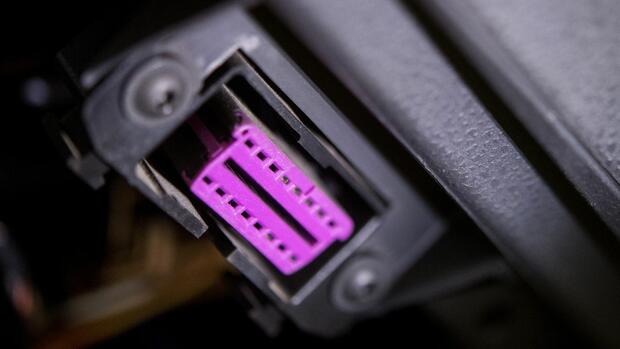Hannover The plug-in modules are connected to the diagnostic interface (OBD2), which has been available in almost all vehicles for around 20 years, through which inspectors or workshops read out vehicle data or errors. In the laboratory, however, it quickly turned out that none of the tested plugs can communicate with the motor electronics at all. All just flashed with their LEDs. So everything is “factory-fresh e-waste”.
In order to at least give the buyers the feeling that they can or must contribute something to the supposed savings effect, the scammers use three tricks with the plugs.
1st Trick: Plug color
Consumers should choose the “right” plug color when buying. For diesel blue or red, for petrol green or yellow. According to the information, there are even color codes for vehicles with gas drive. All, of course, pure humbug.
2. Trick: Switch
Most plug modules have a pushbutton switch on the inside of the board, which – according to the manufacturer’s instructions – should be operated at certain times. However, this can only be done with a needle-thin object through a small hole in the housing.
“Pure occupational therapy for distraction,” the test says. At most, the button changes something at certain points during the LED flashing. Perhaps the fraudsters hoped that the buyers would not get to the bottom of them so quickly because of the distraction maneuver or blame themselves for the lack of savings effect, for example, because they did not press the button consistently enough or at the wrong time.
3. Trick: patience
And another reinsurance to nip the budding protest of the buyers in the bud: allegedly, the automatic optimization of the vehicle electronics takes effect at the earliest after 200 kilometers of driving distance. The drivers should therefore exercise patience: if they have only driven long enough with a plug, the saving effect will already set in.
But in the end, the test conclusion is: “As was to be expected, simple OBD2 plug-in modules do not save fuel.” Even if it were possible here and there to trim the engine control system already optimized by the manufacturer to higher efficiency, this would require much higher technical effort.
Not to forget an approval for the respective specific vehicle type: if the plugs actually intervened in the engine control, their use during the journey would lead to the expiry of the operating license.






